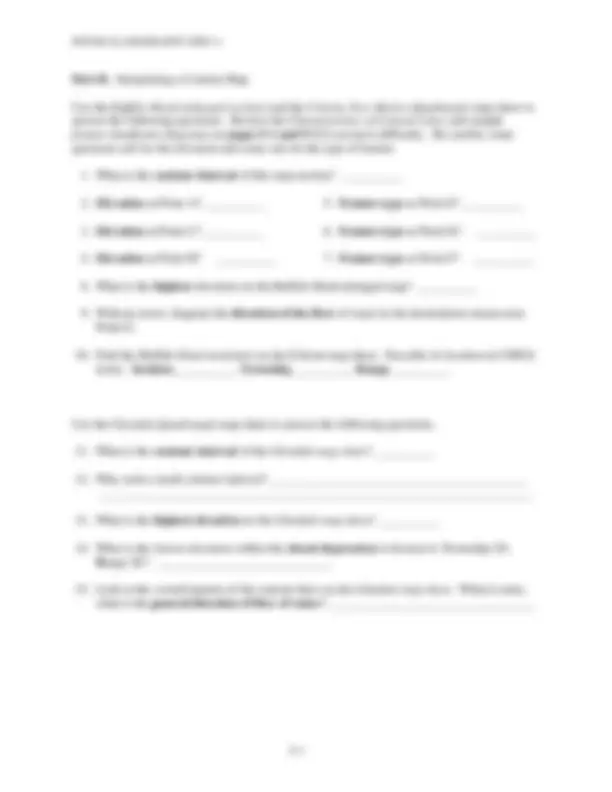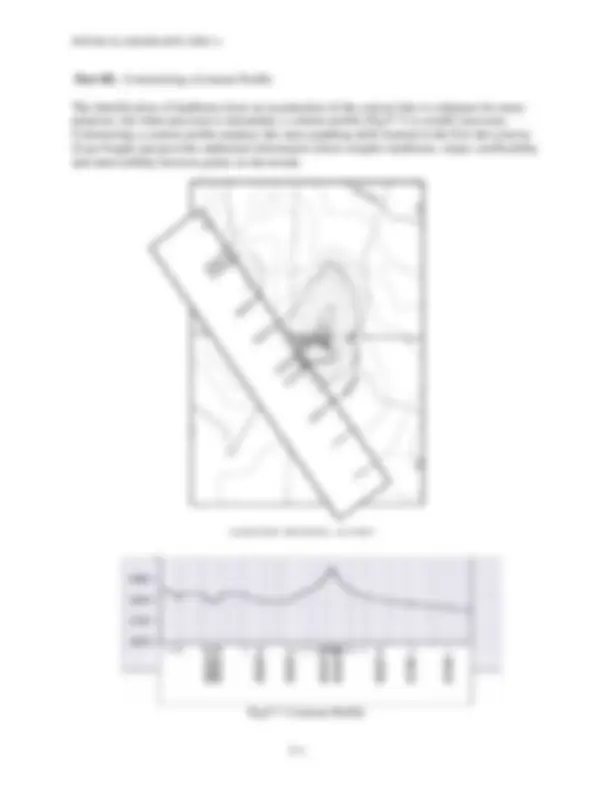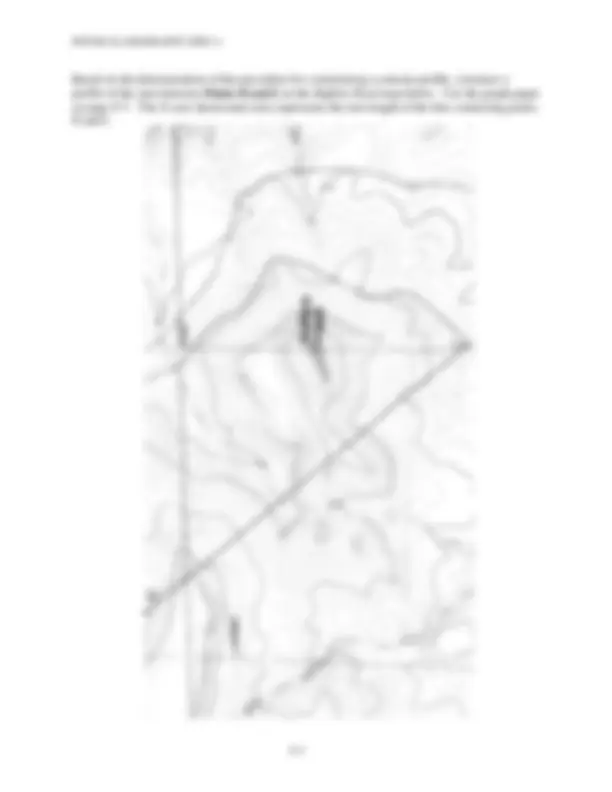





Study with the several resources on Docsity

Earn points by helping other students or get them with a premium plan


Prepare for your exams
Study with the several resources on Docsity

Earn points to download
Earn points by helping other students or get them with a premium plan
Community
Ask the community for help and clear up your study doubts
Discover the best universities in your country according to Docsity users
Free resources
Download our free guides on studying techniques, anxiety management strategies, and thesis advice from Docsity tutors
An introduction to contour lines and profiles in physical geography. Students will learn about the characteristics of contour lines, how to interpret contour maps, and how to construct a contour profile. figures and examples to help illustrate the concepts. Materials needed include a pencil and an enlarged section of a topographic map. Students will become familiar with contour lines and their significance in representing elevation and terrain features.
What you will learn
Typology: Study notes
1 / 7

This page cannot be seen from the preview
Don't miss anything!




Introduction
Topographic maps are distinguished by their ability to show elevation relationships with contour lines. The brown lines on a topographic map are contour lines, lines representing an imaginary line on the ground along which all points are at the same elevation. Contour lines also show the shape of features on the terrain. Given a series of surveyed data points and their elevations, one can construct a contour map of any known surface. In this exercise the student will become familiar with contour lines and their characteristics. Students will also use an enlarged section of the Folsom, New Mexico Quadrangle to “interpret the language of the contours”, to determine elevations, types of slope and features (landforms) on the map. Lastly, students will construct a contour profile, or cross section diagram, of a selected map section
Materials needed: pencil, Buffalo Head enlarged section + 2 topographic maps (on reserve)
Part I. Characteristics of Contour Lines
Before beginning, review the following rules or characteristics concerning contour lines.
Part I. Elevations, Slopes and Features (Landforms) Shown With Contour Lines
Figure F-1: Steep, Irregular Slope Figure F-2: Gentle, Uniform Slope
Figure F-3: Peak Figure F-4: Valley
Figure F-5: Closed Depression Figure F-6: Saddle
Part III. Constructing a Contour Profile
The identification of landforms from an examination of the contour lines is adequate for many purposes, but when precision is demanded, a contour profile (Fig F-7) is usually necessary. Constructing a contour profile employs the same graphing skills learned in the first lab exercise (Line Graph) and provides additional information about complex landforms, slopes, trafficability and intervisibility between points on the terrain.
Fig F-7: Contour Profile
Based on the demonstration of the procedure for constructing a contour profile, construct a profile of the area between Points H and I on the Buffalo Head map below. Use the graph paper on page F-7. The X-axis (horizontal axis) represents the true length of the line connecting points H and I.
Graph paper for Buffalo Head Contour Profile